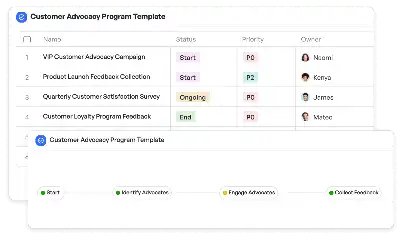Equipment Thermal Expansion Compensation
Achieve project success with the Equipment Thermal Expansion Compensation today!

What is Equipment Thermal Expansion Compensation?
Equipment Thermal Expansion Compensation refers to the process of managing and mitigating the effects of thermal expansion in various types of equipment. Thermal expansion occurs when materials expand due to heat, which can lead to structural stress, misalignment, or even failure in critical systems. This template is designed to address these challenges by providing a structured approach to analyze, design, and implement solutions for thermal expansion issues. For instance, in industries like oil and gas, pipelines often experience significant temperature fluctuations, leading to expansion and contraction. Without proper compensation mechanisms, this can result in leaks or ruptures. By using this template, engineers can systematically evaluate the thermal properties of materials, design appropriate expansion joints, and ensure the longevity and safety of the equipment.
Try this template now
Who is this Equipment Thermal Expansion Compensation Template for?
This template is ideal for engineers, project managers, and designers working in industries where thermal expansion is a critical concern. Typical users include mechanical engineers designing HVAC systems, civil engineers working on bridges and buildings, and industrial engineers managing manufacturing equipment. For example, a mechanical engineer designing a high-temperature furnace would use this template to ensure that the furnace components can withstand thermal expansion without compromising performance. Similarly, a civil engineer might use it to design expansion joints in a bridge to accommodate temperature-induced movements. This template is also valuable for maintenance teams who need to assess and address thermal expansion issues in existing systems.

Try this template now
Why use this Equipment Thermal Expansion Compensation?
Thermal expansion can cause significant challenges, such as material fatigue, structural damage, and operational inefficiencies. For example, in a power plant, unaddressed thermal expansion in piping systems can lead to costly downtime and safety hazards. This template provides a comprehensive solution by guiding users through the process of identifying potential expansion issues, selecting appropriate materials, and implementing effective compensation mechanisms. It also includes tools for simulation and testing, allowing users to validate their designs before implementation. By addressing these specific pain points, the template ensures that equipment operates safely and efficiently, even under extreme temperature conditions.

Try this template now
Get Started with the Equipment Thermal Expansion Compensation
Follow these simple steps to get started with Meegle templates:
1. Click 'Get this Free Template Now' to sign up for Meegle.
2. After signing up, you will be redirected to the Equipment Thermal Expansion Compensation. Click 'Use this Template' to create a version of this template in your workspace.
3. Customize the workflow and fields of the template to suit your specific needs.
4. Start using the template and experience the full potential of Meegle!
Try this template now
Free forever for teams up to 20!
The world’s #1 visualized project management tool
Powered by the next gen visual workflow engine




